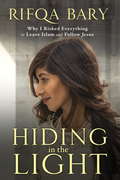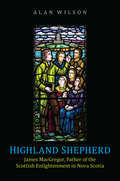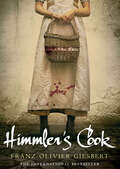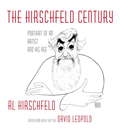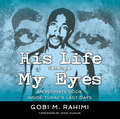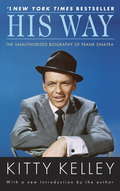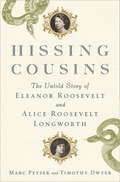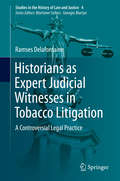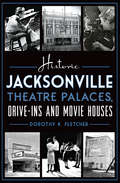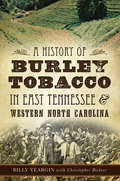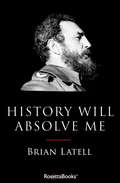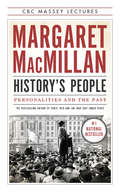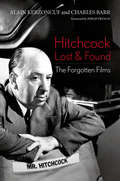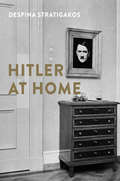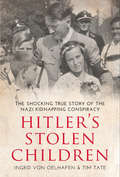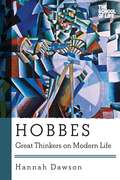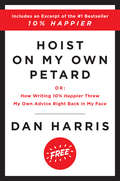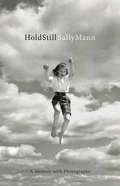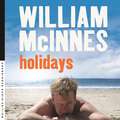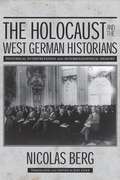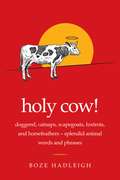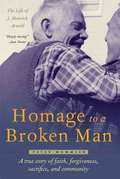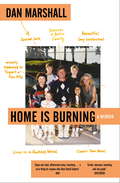- Table View
- List View
Hiding in the Light: Why I Risked Everything to Leave Islam and Follow Jesus
by Rifqa Bary"After four years of hiding my faith from my family, I knew that it was time. I wrote with shaky hands, 'Jesus Christ is my Lord and Savior. I refuse to deny him....' There was no turning back now. I had to get out of that house if I wanted to live. Was this worth risking everything for? Yes." Rifqa Bary grew up in a devout Muslim home, obediently following her parents' orders to practice the rituals of Islam. But God was calling her to freedom and love. He was calling her to true faith. He was calling her to give up everything. Leaving Islam for Christianity cost her more than she imagined but gave more than she could have dreamed. Hiding in the Light is the story of Rifqa's remarkable spiritual journey from Islam to Christianity. It is also the untold story of how she ran from her father's threats to find refuge with strangers in Florida, only to face a controversial court case that reached national headlines. Most of all, it is the story of a young girl who made life-changing sacrifices to follow Jesus--and who inspires us to do the same.
Higher: 100 Years of Boeing
by Russ BanhamOver the course of a century, the Boeing Company has grown from a small outfit operating out of a converted boathouse--producing a single pontoon plane made from canvas and wood--into the world's largest aerospace company. The thrilling story of the celebrated organization is one filled with ambition, ingenuity, and a passion to exceed expectations. In this lavishly illustrated book, published to coincide with Boeing's 100th anniversary, Pulitzer Prize-nominated author Russ Banham recounts the tale of a company and an industry like no other--one that has put men on the moon, defended the free world, and changed the way we live.
Highland Shepherd
by Alan WilsonIn 1786, the Reverend James MacGregor (1759-1830) was dispatched across the North Atlantic to establish a dissenting Presbyterian church in Pictou, Nova Scotia. The decision dismayed MacGregor, who had hoped for a post in the Scottish Highlands. Yet it led to a remarkable career in what was still the backwoods of colonial North America. Industrious and erudite, MacGregor established the progressive Pictou Academy, opposed slavery, and promoted scientific education, agriculture, and industry. Poet and translator, fluent in nine languages, he encouraged the preservation of the Gaelic language and promoted Scottish culture in Nova Scotia.Highland Shepherd finally bestows on MacGregor the recognition that he so richly deserves. Alan Wilson brings MacGregor and his surroundings to life, detailing his numerous achievements and establishing his importance to the social, religious, and intellectual history of the Maritimes.
Hildegard of Bingen and Musical Reception
by Jennifer BainSince her death in 1179, Hildegard of Bingen has commanded attention in every century. In this book Jennifer Bain traces the historical reception of Hildegard, focusing particularly on the moment in the modern era when she began to be considered as a composer. Bain examines how the activities of clergy in nineteenth-century Eibingen resulted in increased veneration of Hildegard, an authentication of her relics, and a rediscovery of her music. The book goes on to situate the emergence of Hildegard's music both within the French chant restoration movement driven by Solesmes and the German chant revival supported by Cecilianism, the German movement to reform Church music more generally. Engaging with the complex political and religious environment in German speaking areas, Bain places the more recent Anglophone revival of Hildegard's music in a broader historical perspective and reveals the important intersections amongst local devotion, popular culture, and intellectual activities.
Himmler's Cook
by Franz-Olivier GiesbertA gloriously rich and blackly funny French bestseller about Rose, a 105-year-old chef who has experienced life at its fullest. . . and at its most deadly. Rose has endured more than her fair share of hardships: the Armenian genocide, the Nazi regime, and the delirium of Maoism. Yet somehow, despite all the suffering, Rose never loses her joie de vivre. As she looks back over her long life—one of survival and, sometimes, one of retribution—she recalls those unique experiences that added such spice to her life, whether it was being a confidante to Hitler, a friend to Simone de Beauvoir or cooking for Heinrich Himmler.
The Hirschfeld Century: Portrait of an Artist and His Age
by Al Hirschfeld David LeopoldI am down to a pencil, a pen, and a bottle of ink. I hope one day to eliminate the pencil. Al Hirschfeld redefined caricature and exemplified Broadway and Hollywood, enchanting generations with his mastery of line. His art appeared in every major publication during nine decades of the twentieth and twenty-first centuries, as well as on numerous book, record, and program covers; film posters and publicity art; and on fifteen U.S. postage stamps. Now, The Hirschfeld Century brings together for the first time the artist's extraordinary eighty-two-year career, revealed in more than 360 of his iconic black-and-white and color drawings, illustrations, and photographs--his influences, his techniques, his evolution from his earliest works to his last drawings, and with a biographical text by David Leopold, Hirschfeld authority, who, as archivist to the artist, worked side by side with him and has spent more than twenty years documenting the artist's extraordinary output. Here is Hirschfeld at age seventeen, working in the publicity department at Goldwyn Pictures (1920-1921), rising from errand boy to artist; his year at Universal (1921); and, beginning at age eighteen, art director at Selznick Pictures, headed by Louis Selznick (father of David O.) in New York. We see Hirschfeld, at age twenty-one, being influenced by the stylized drawings of Miguel Covarrubias, newly arrived from Mexico (they shared a studio on West Forty-Second Street), whose caricatures appeared in many of the most influential magazines, among them Vanity Fair. We see, as well, how Hirschfeld's friendship with John Held Jr. (Held's drawings literally created the look of the Jazz Age) was just as central as Covarrubias to the young artist's development, how Held's thin line affected Hirschfeld's early caricatures. Here is the Hirschfeld century, from his early doodles on the backs of theater programs in 1926 that led to his work for the drama editors of the New York Herald Tribune (an association that lasted twenty years) to his receiving a telegram from The New York Times, in 1928, asking for a two-column drawing of Sir Harry Lauder, a Scottish vaudeville singing sensation making one of his (many) farewell tours, an assignment that began a collaboration with the Times that lasted seventy-five years, to Hirschfeld's theater caricatures, by age twenty-five, a drawing appearing every week in one of four different New York newspapers. Here, through Hirschfeld's pen, are Ethel Merman, Benny Goodman, Judy Garland, Mickey Rooney, Katharine Hepburn, the Marx Brothers, Barbra Streisand, Elia Kazan, Mick Jagger, Ella Fitzgerald, Laurence Olivier, Martha Graham, et al. . . . Among the productions featured: Fiddler on the Roof, West Side Story, Rent, Guys and Dolls, The Wizard of Oz (Hirschfeld drew five posters for the original release), Gone with the Wind, The Sopranos, and more. Here as well are his brilliant portraits of writers, politicians, and the like, among them Ernest Hemingway (a pal from 1920s Paris), Tom Wolfe, Charles de Gaulle, Nelson Mandela, Joseph Stalin, Winston Churchill, and every president from Franklin D. Roosevelt to Bill Clinton. Sumptuous and ambitious, a book that gives us, through images and text, a Hirschfeld portrait of an artist and his age. From the Hardcover edition.
His Life Through My Eyes
by Gobi M. RahimiGobi M. Rahimi spent Tupac Shakur's last eight months with him, serving as a co-producer and director for many of his music videos and short films. Along the way, he took behind-the-scenes photographs of Tupac in more relaxed, casual settings. Gobi's photos and words show a side of Tupac that is rarely seen, and humanizes a man who has since become a legend.
His Way
by Kitty Kelley#1 NEW YORK TIMES BESTSELLER * With a new Introduction by the author This is the book that Frank Sinatra tried--but failed--to keep from publication, and it's easy to understand why. This unauthorized biography goes behind the iconic myth of Sinatra to expose the well-hidden side of one of the most celebrated--and elusive--public figures of our time. Celebrated journalist Kitty Kelley spent three years researching government documents (Mafia-related material, wiretaps, and secret testimony) and interviewing more than 800 people in Sinatra's life (family, colleagues, law-enforcement officers, friends). The result is a stunning, often shocking exposé of a man as tortured as he was talented, as driven to self-destruction as he was to success. Featuring a new Introduction by the author, this fully documented, highly detailed biography--filled with revealing anecdotes--is the penetrating story of the explosively controversial and undeniably multitalented legend who ruled the entertainment industry for fifty years and continues to fascinate to this day. Praise for His Way "The most eye-opening celebrity biography of our time."--The New York Times "A compelling page-turner . . . Kitty Kelley's book has made all future Sinatra biographies virtually redundant."--Los Angeles Herald ExaminerFrom the Trade Paperback edition.
Hissing Cousins
by Timothy Dwyer Marc PeyserA lively and provocative double biography of first cousins Eleanor Roosevelt and Alice Roosevelt Longworth, two extraordinary women whose tangled lives provide a sweeping look at the twentieth century. When Theodore Roosevelt became president in 1901, his beautiful and flamboyant daughter was transformed into "Princess Alice," arguably the century's first global celebrity. Thirty-two years later, her first cousin Eleanor moved into the White House as First Lady. Born eight months and twenty blocks apart from each other in New York City, Eleanor and Alice spent a large part of their childhoods together and were far more alike than most historians acknowledge. But their politics and temperaments couldn't have been more distinct. Do-gooder Eleanor was committed to social justice but hated the limelight; acid-tongued Alice, who became the wife of philandering Republican congressman Nicholas Longworth, was an opponent of big government who gained notoriety for her cutting remarks (she famously quipped that dour President Coolidge "looked like he was weaned on a pickle"). While Eleanor revolutionized the role of First Lady with her outspoken passion for human rights, Alice made the most of her insider connections to influence politics, including doing as much to defeat the League of Nations as anyone in elective office.The cousins themselves liked to play up their oil-and-water relationship. "When I think of Frank and Eleanor in the White House I could grind my teeth to powder and blow them out my nose," Alice once said. In the 1930s they even wrote opposing syndicated newspaper columns and embarked on competing nationwide speaking tours. Blood may be thicker than water, but when the family business is politics, winning trumps everything.Vivid, intimate, and stylishly written, Hissing Cousins finally sets this relationship center stage, revealing the contentious bond between two political trailblazers who short-circuited the rules of gender and power, each in her own way.
Historians as Expert Judicial Witnesses in Tobacco Litigation
by Ramses DelafontaineHistorian Ramses Delafontaine presents an engaging examination of a controversial legal practice: the historian as an expert judicial witness. This book focuses on tobacco litigation in the U. S. wherein 50 historians have witnessed in 314 court cases from 1986 to 2014. The author examines the use of historical arguments in court and investigates how a legal context influences historical narratives and discourse in forensic history. Delafontaine asserts that the courtroom is a performative and fact-making theatre. Nonetheless, he argues that the civic responsibility of the historian should not end at the threshold of the courtroom where history and truth hang in the balance. The book is divided into three parts featuring an impressive range of European and American case studies. The first part provides a theoretical framework on the issues which arise when history and law interact. The second part gives a comparative overview of European and American examples of forensic history. This part also reviews U. S. legal rules and case law on expert evidence, as well as extralegal challenges historians face as experts. The third part covers a series of tobacco-related trials. With remunerations as high as hundreds of thousands of dollars and no peer-reviewed publications or communication on the part of the historians hired by the tobacco companies the question arises whether some historians are willing to trade their reputation and that of their university for the benefit of an interested party. The book further provides 50 expert profiles of the historians active in tobacco litigation, lists detailing the manner of the expert's involvement, and West Law references to these cases. This book offers profound and thought-provoking insights on the post-war forensification of history from an interdisciplinary perspective. In this way, Delafontaine makes a stirring call for debate on the contemporary engagement of historians as expert judicial witnesses in U. S. tobacco litigation.
Historic Jacksonville Theatre Palaces, Drive-ins and Movie Houses (Landmarks)
by Dorothy K. FletcherJacksonville's theatre and performance history is rich with flair and drama. The theatres, drive-ins and movie houses that brought entertainment to its citizens have their own exciting stories. Some have passed into memory. The Dixie Theatre, originally part of Dixieland Park, began to fade in 1909. The Palace Theatre, home to vaudeville acts, was torn down in the '50s. The Alhambra has been everyone's favorite dinner theatre since 1967's debut of Come Blow Your Horn. Local author Dorothy K. Fletcher revives the history of Jacksonville's theatres. Lights, camera, action!
A History of Burley Tobacco in East Tennessee & Western North Carolina
by Billy Yeargin Christopher BickersBurley tobacco revolutionized the industry in east Tennessee and western North Carolina. What started from two farmers planting white burley in Greeneville ignited an agricultural revolution and significantly changed crops, production and quality. Burley transformed the tobacco industry with new cultivation techniques and a shift from dark and flue-cured tobacco. By the 1990s, burley tobacco production in the region had drastically declined, and it is a tradition that few local farmers still practice. Agricultural experts Billy Yeargin and Christopher Bickers take a nostalgic look at the historic rise of burley tobacco and its gradual decline.
History Will Absolve Me: Fidel Castro
by Brian LatellThe CIA analyst who tracked Castro for decades explores the mind and motivations of the man who governed Cuba for nearly half a century. On trial in Santiago for leading a bloody assault on the city&’s Moncada garrison, young revolutionary leader Fidel Castro uttered a phrase in court that would come to serve as a rallying cry for his 26th of July Movement and his regime thereafter: &“History will absolve me.&” Despite the fact that his methods resulted in great loss of life on both sides, Castro never wavered in his belief that in the final reckoning his life&’s work would be vindicated—his violence necessary in bringing a new government to Cuba and a new political model to the developing world. For decades, CIA analyst Brian Latell tracked Castro relentlessly—getting to know his habits, his fears, and the passions that drove him. In this book, the author of After Fidel and Castro&’s Secret steps from the shadows to paint a complex and nuanced portrait of the man he came to know better than any other intelligence target—revealing the mind and motivations of one of the most mercurial, passionate, and dominating leaders of the twentieth century. &“One of America&’s foremost Cuba analysts.&” —George J. Tenet, former CIA director
History's People: Personalities and the Past (The CBC Massey Lectures)
by Margaret MacMillanPart of the CBC Massey Lectures Series In History’s People internationally acclaimed historian Margaret MacMillan gives her own personal selection of figures of the past, women and men, some famous and some little-known, who stand out for her. Some have changed the course of history and even directed the currents of their times. Others are memorable for being risk-takers, adventurers, or observers. She looks at the concept of leadership through Bismarck and the unification of Germany; William Lyon MacKenzie King and the preservation of the Canadian Federation; Franklin Delano Roosevelt and the bringing of a unified United States into the Second World War. She also notes how leaders can make huge and often destructive mistakes, as in the cases of Hitler, Stalin, and Thatcher. Richard Nixon and Samuel de Champlain are examples of daring risk-takers who stubbornly went their own ways, often in defiance of their own societies. Then there are the dreamers, explorers, and adventurers, individuals like Fanny Parkes and Elizabeth Simcoe who manage to defy or ignore the constraints of their own societies. Finally, there are the observers, such as Babur, the first Mughal emperor of India, and Victor Klemperer, a Holocaust survivor, who kept the notes and diaries that bring the past to life. History’s People is about the important and complex relationship between biography and history, individuals and their times.
Hitchcock Lost and Found: The Forgotten Films (Screen Classics)
by Charles Barr Alain KerzoncufKnown as the celebrated director of critical and commercial successes such as Psycho (1960) and The Birds (1963), Alfred Hitchcock is famous for his distinctive visual style and signature motifs. While recent books and articles discussing his life and work focus on the production and philosophy of his iconic Hollywood-era films like Notorious (1946) and Vertigo (1958), Hitchcock Lost and Found moves beyond these seminal works to explore forgotten, incomplete, lost, and recovered productions from all stages of his career, including his early years in Britain.Authors Alain Kerzoncuf and Charles Barr highlight Hitchcock's neglected works, including various films and television productions that supplement the critical attention already conferred on his feature films. They also explore the director's career during World War II, when he continued making high-profile features while also committing himself to a number of short war-effort projects on both sides of the Atlantic. Focusing on a range of forgotten but fascinating projects spanning five decades, Hitchcock Lost and Found offers a new, fuller perspective on the filmmaker's career and achievements.
Hitler at Home
by Despina StratigakosA look at Adolf Hitler&’s residences and their role in constructing and promoting the dictator&’s private persona both within Germany and abroad. Adolf Hitler&’s makeover from rabble-rouser to statesman coincided with a series of dramatic home renovations he undertook during the mid-1930s. This provocative book exposes the dictator&’s preoccupation with his private persona, which was shaped by the aesthetic and ideological management of his domestic architecture. Hitler&’s bachelor life stirred rumors, and the Nazi regime relied on the dictator&’s three dwellings—the Old Chancellery in Berlin, his apartment in Munich, and the Berghof, his mountain home on the Obersalzberg—to foster the myth of the Führer as a morally upstanding and refined man. Author Despina Stratigakos also reveals the previously untold story of Hitler&’s interior designer, Gerdy Troost, through newly discovered archival sources. At the height of the Third Reich, media outlets around the world showcased Hitler&’s homes to audiences eager for behind-the-scenes stories. After the war, fascination with Hitler&’s domestic life continued as soldiers and journalists searched his dwellings for insights into his psychology. The book&’s rich illustrations, many previously unpublished, offer readers a rare glimpse into the decisions involved in the making of Hitler&’s homes and into the sheer power of the propaganda that influenced how the world saw him.&“Inarguably the powder-keg title of the year.&”—Mitchell Owen, Architectural Digest&“A fascinating read, which reminds us that in Nazi Germany the architectural and the political can never be disentangled. Like his own confected image, Hitler&’s buildings cannot be divorced from their odious political hinterland.&”—Roger Moorhouse, Times
Hitler's Stolen Children: The Shocking True Story of the Nazi Kidnapping Conspiracy
by Tim Tate Ingrid von OelhafenHitler’s Stolen Children is a powerful, first-person account of being at the heart of one of the Nazi’s cruelest and most obscene experiments—the Lebensborn program to create a new Aryan master race. In 1942, when she was nine months old, Erika Matko was stolen from her family in St. Sauerbrunn in what was then Yugoslavia and transported to Germany to be “Germanized.” She was chosen because, unlike her older brother and sister, she was blond and blue eyed, and had passed a medical racial examination that classed her as Aryan. Lebensborn then farmed her out to politically vetted German foster parents. Renamed Ingrid von Oelhafen, she grew up believing she was German. Then, one day, friends of her foster family revealed the truth about her origins. This was the beginning of a life-long quest to discover the truth about her birth and the Lebensborn program. It was a journey that would take her across Germany, uncovering the terrible secrets of Lebensborn—including the kidnapping of up to half a million babies like her and the deliberate murder of those deemed “sub-standard”—and back to the village where she was born. But here she would be faced with something even more painful: a woman who for more than seventy years had been using her name—and living her life.
Hobbes: Great Thinkers on Modern Life
by Hannah DawsonHe elevated politics to a science and in his quest to find a way for society to achieve peace, Thomas Hobbes provided a secular justification for the state, and laid the foundations for modern sociology in the process. His mighty Leviathan and other works can still provide guidance on navigating society and politics today. Thomas Hobbes was an English philosopher who was roiled by the bloodshed and turmoil of the English Civil War. During this period of ceaseless in-fighting, he wrote his masterpiece, Leviathan, which established the foundation for Western political thought. His work has inspired both hate and awe, as he reveals the darker side of human nature and the value of authority. Though he claims man's nature is inherently competitive and selfish, he also shows us how to utilize these traits to our advantage to flourish, be fearless, and free.
Hoist on My Own Petard
by Dan HarrisI wrote a memoir about a fidgety, skeptical newsman who reluctantly becomes a meditator to deal with his issues – and in the process of publishing it, I occasionally, to my embarrassment, found myself failing to practice what I preach. I was kind of like a dog that soils the rug, and the universe kept shoving my face into it. In 2014, Dan Harris published his memoir 10% Happier. The book—which describes his reluctant embrace of meditation after a drug problem, an on-air freak-out, and an unplanned "spiritual" journey—became an instant bestseller and Dan, to his own surprise, became a public evangelist for mindfulness. Hoist on My Own Petard is the story of what happens to Dan Harris after the runaway success of his memoir and the lessons he had to (re)learn in the process.
Hold Still: A Memoir with Photographs
by Sally MannNATIONAL BOOK AWARD FINALISTONE OF THE BEST BOOKS OF THE YEARThe New York Times, Washington Post, The San Francisco Chronicle, Vogue, NPR, Publishers Weekly, BookPage A revealing and beautifully written memoir and family history from acclaimed photographer Sally Mann. In this groundbreaking book, a unique interplay of narrative and image, Mann's preoccupation with family, race, mortality, and the storied landscape of the American South are revealed as almost genetically predetermined, written into her DNA by the family history that precedes her. Sorting through boxes of family papers and yellowed photographs she finds more than she bargained for: "deceit and scandal, alcohol, domestic abuse, car crashes, bogeymen, clandestine affairs, dearly loved and disputed family land . . . racial complications, vast sums of money made and lost, the return of the prodigal son, and maybe even bloody murder." In lyrical prose and startlingly revealing photographs, she crafts a totally original form of personal history that has the page-turning drama of a great novel but is firmly rooted in the fertile soil of her own life.
Holidays
by William McInnesWritten and read by bestselling Australian author and much loved actor, William McInnes, this is a story about our love affair with holidays.It's about going away and staying at home. It's about the relaxing times you had as a kid, escapes you have with your children and the stories you hear from your friends.It can be about a romantic sunset, the spare seat at breakfast being taken by an attractive stranger, a miraculous airline upgrade - or missing bags, unfortunate rashes and wrong turns that lead to places you definitely did not intend to go.But most of all it's about being in your backyard in an above-ground pool, floating in circles, staring at the clouds as you go round and round, and knowing as you float that life is sweet because you're on holidays.PRAISE for William McInnes' books:'skilfully constructed...insightful, understated and very funny' Sydney Morning Herald on THE LAUGHING CLOWNS'The Making of Modern Australia is a ripper' The Canberra Times'William McInnes compels with the sheer delightfulness of his memoir, and with his fine ability to spin a damn funny yarn' Sunday Telegraph on A MAN'S GOT TO HAVE A HOBBY'funny and clever' Daily Telegraph on THAT'D BE RIGHT'A big-hearted novel with character' Sunday Telegraph on CRICKET KINGS
The Holocaust and the West German Historians
by Nicolas BergThis landmark book was first published in Germany, provoking both acclaim and controversy. In this "history of historiography," Nicolas Berg addresses the work of German and German-Jewish historians in the first three decades of post#150;World War II Germany. He examines how they perceived#151;and failed to perceive#151;the Holocaust and how they interpreted and misinterpreted that historical fact using an arsenal of terms and concepts, arguments and explanations. This English-language translation is also a shortened and reorganized edition, which includes a new introduction by Berg reviewing and commenting on the response to the German editions. Notably, in this American edition, discussion of historian Joseph Wulf and his colleague and fellow Holocaust survivor Léon Poliakov has been united in one chapter. And special care has been taken to make clear to English speakers the questions raised about German historiographical writing. Translator Joel Golb comments, "From 1945 to the present, the way historians have approached the Holocaust has posed deep-reaching problems regarding choice of language. . . . This book is consequently as much about language as it is about facts. "
Holy Cow!: Doggerel, Catnaps, Scapegoats, Foxtrots, and Horse Feathers?Splendid Animal Words and Phrases
by Boze HadleighWe love animals but insult humans by calling them everything from weasels or pigs to sheep, mice, chickens, sharks, snakes, and bird-brains. Animal epithets, words, and phrases are so widespread we often take them for granted or remain ignorant of the fascinating stories and facts behind them. Spanning the entire animal kingdom, Holy Cow! explains: Why hot dogs are named after canines. Why people talk turkey or go cold turkey. Why curiosity killed the cat, although dogs are more curious about us. Why letting the cat out of the bag originally referred to a duped shopper. What a horse of another color is, what horsefeathers politely alludes to, why a mule is a lady’s slipper, and what horseradish has to do with horses. Why the combination of humans and cows probably led to capitalism--its name from Latin for head, as in heads of cows. Why holy cow and sacred cow have almost opposite meanings. Whether people actually chewed the fat or ate crow (and why it’s a crowbar). How a hog became a motorcycle and a chick a young woman. What happens to freeze the balls off a brass monkey. What buck has to do with being naked. Why the birds and the bees. Why a piggy bank and why one feeds the kitty. What lame ducks have to do with U. S. presidents. How red herring came about via activists opposed to fox hunting. Where snake oil, popular in the 1800s and rich in Omega-3 fatty acids, came from. That the proverbial fly in the ointment goes back to the Bible’s Ecclesiastes (10:1). How Swiss watchmakers created teensy-weensy coaches for fleas to pull in flea circuses. And much--much!--more. Don't be a lame duck and get this book!
Homage To A Broken Man: A True Story Of Faith, Forgiveness, Sacrifice, And Community (Bruderhof History Series)
by Peter Mommsen Eugene PetersonA dramatic true story of a man refined by fire, a Bruderhof pastor whose spiritual legacy continues to touch thousands. <P><P> Can our wounds become our greatest gift? Bruderhof pastor J. Heinrich Arnold was a broken man. Yet those who knew him said they never met another like him. Some spoke of his humility and compassion; others of his frankness and earthy humor. In his presence, complete strangers poured out their darkest secrets and left transformed. Others met him with hatred. <P><P> Writer Henri Nouwen called him a "prophetic voice" and wrote of how his words "touched me as a double-edged sword, calling me to choose between truth and lies, selflessness and selfishness. . . . Here was no pious, sentimental guide; every word came from experience." <P><P> Who was this extraordinary yet simple man? In this gripping and richly spiritual book, Peter Mommsen tells the dramatic true story of the grandfather he hardly knew. Read it, and you will never look at your own life the same way again. <P><P> Gold Medal Winner, 2016 IPPY Book of the Year Award in Biography, Independent Publishers Silver Medal Winner, 2016 Benjamin Franklin Award in Religion, Independent Book Publishers Association
Home is Burning
by Dan Marshall'An incredibly personal story ... sad, but unbelievably funny' - Claudia Winkleman, BBC Radio 2 Arts Show'This memoir is gasp-out-loud, offensively funny, touching and a sure thing for anyone who likes David Sedaris - but with more Mormons' - RedAt twenty-five, Dan left his 'spoiled white asshole' life in Los Angeles to look after his dying parents in Salt Lake City, Utah. His mother, who had already been battling cancer on and off for close to 15 years, had taken a turn for the worse. His father, a devoted marathon runner and adored parent, had been diagnosed with motor neurone disease which was quickly eroding his body. Dan's four siblings were already home, caring for their parents and resenting Dan for not doing the same. Home is Burning tells the story of Dan's year at home in Salt Lake City, as he reunites with his eclectic family -the only non-Mormon family of seven in the entire town - all of them trying their best to be there for the father who had always been there for them.
